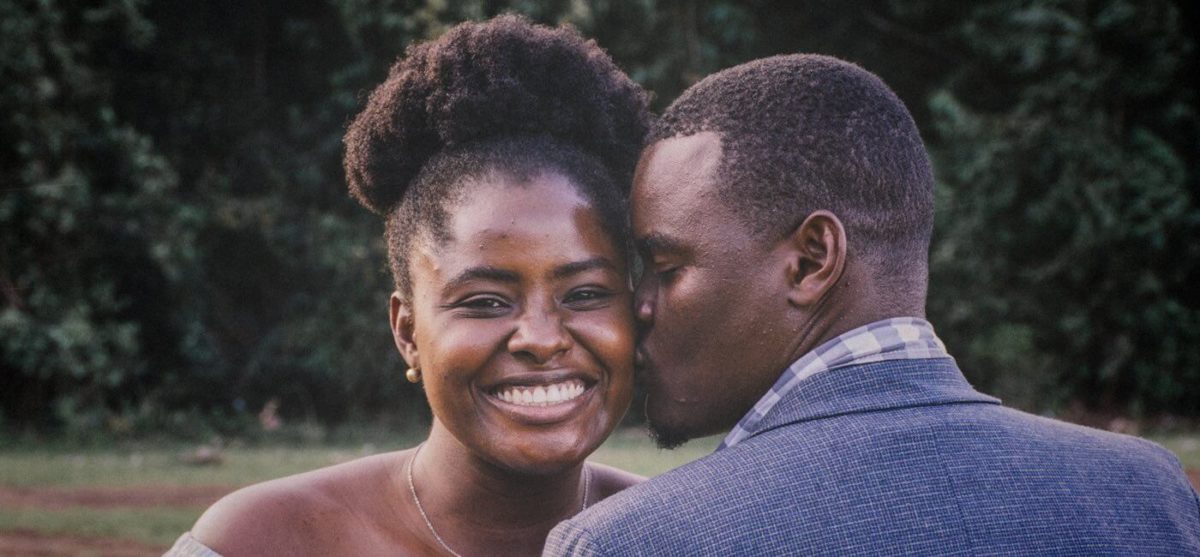In my work as a therapist, I see daily examples of relationships slowly dying—and occasionally exploding.
While tragic, these examples give me some insight into a common set of factors that tend to ruin relationships. And with a little reverse engineering, they also shed light on how we might strengthen and improve relationships.
I’ve taken these factors and combined them with my own training as a psychologist to come up with five practical tips anyone can use to improve the quality of your most important relationships.
Whether you want to strengthen your marriage, be a better parent, or get along better with your boss, learning to see people like a therapist can be a powerful way to do it.
1. For better communication, validate first, problem-solve second.
By far the biggest mistake I see people (myself, included!) make in their relationships is getting stuck in problem-solving mode.
When we’re stuck in problem-solving mode, we immediately respond to anything difficult or painful as if it was a problem: We analyze, judge, dissect, compare, evaluate, and interrogate. And while all of these problem-solving approaches are helpful if you’re building a bridge or solving an equation, they tend to backfire when applied to people.
While your intentions are probably good, treating people’s struggles like a problem is invalidating. It makes them feel like it’s not okay for them to have the problem or that they should be able to fix it immediately. And for someone who’s struggling or upset, feeling bad about feeling bad is a recipe for defensiveness, communication breakdowns, and long-term relationship trouble.
When we’re upset, most of us simply want to feel understood and that we’re not alone.
The alternative is to validate their struggles first and reserve your problem-solving efforts for later (if ever). Validating someone’s struggles simply means letting them know that you understand what they’re saying and that it makes sense that they’re feeling that way.
For example, imagine your spouse comes home from work looking anxious and stressed. You ask what’s wrong and she replies that she thinks she’s going to be fired. She goes on to explain how she completely flubbed a potentially huge new sale and her boss was furious.
Instead of diving into 3 reasons she’s unlikely to actually be fired (problem-solving), you might start by saying, I’m so sorry, honey. That sounds like a horrible experience. I’d be pretty worried too.
This initial validating statement will help your spouse feel like she’s really being heard and that you’re with her. When we’re upset, most of us simply want to feel understood and that we’re not alone. This is why learning to validate problems is such a helpful tool. It rearranges the relationship dynamic such that you’re on the same team rather than rivals.
2. To be more compassionate, think like an engineer.
Good therapists are trained to look beneath the appearance of a behavior and find the function that behavior serves.
For example: You see your 16-year-old son struggling to open a can of pasta sauce, so you suggest he tap the edges of the top with a knife to loosen it up. Out of nowhere, he blows up at you: Criticizing you for always being in his business and storming out of the room, slamming the door behind him. A bit bewildered and more than a little hurt, you chalk it up to hormones and hope the whole thing blows over sooner than later.
The surface-level interpretation is I guess he’s just hormonal or, less charitably, How did my little darling turn into such a jerk? Of course, neither of these is wrong, per se. Teenagers do have complicated hormonal changes that affect their behavior. And they can simply be jerks. But to go a layer deeper, you might ask yourself: What function does getting mad at and criticizing me serve?
Developmentally, teenagers are rapidly learning to become more independent, which—while often infuriating—is ultimately a healthy process. Your son is doing the hard work of trying to forge his own identity as an individual separate from his parents and family. And having his failure of independence (opening the jar) pointed out in what probably felt like a humiliating fashion hurt quite a bit. And often when we feel hurt or injured, we tend to lash out in anger.
Now, you may still disagree with your son’s behavior of lashing out at you. But by taking the time to understand why he might have done it, and acknowledging that on a certain level it makes sense (we were all teenagers once, remember?), you can become a little more compassionate towards him.
3. To change your behavior, look for environmental triggers.
Sometimes the best way to improve a relationship is to improve your own behavior. And a good therapist knows that changing your environment is often the best and fastest way to change your behavior.
Suppose you’ve been having a lot of conflict with your supervisor at work. And that most of the conflict comes down to you frequently being a few minutes late to work. From your perspective, your supervisor is being needlessly neurotic and strict—probably as some kind of power play to boost their own ego. From your supervisor’s perspective, she’s concerned that tardiness is a slippery slope, and as soon as people believe it’s okay to be three minutes late, they start to think ten minutes is acceptable, and so on.
At the end of the day, despite your irritations, you decide it’s in your best interest to try and be on time to work. Instead of looking at your tardiness as a personality flaw or a character defect, try to look at it as a natural response to the unique environment you’ve built.
Sometimes the best way to change your behavior is to change your environment.
For example, perhaps you tend to run late to work because your favorite NPR segment ends right about the time you’re supposed to be clocking into work. Consequently, you often end up sitting in your car waiting to hear the end of the segment, and therefore, get into work a few minutes late.
Hearing your favorite NPR segment come on the radio during your commute is the trigger that sets off the whole chain of emotions and behaviors that ultimately leads to you being late. So, change the trigger… You might, for example, subscribe to that NPR segment’s podcast feed, which means you could listen to it on your commute home from work rather than before work.
If you want to change your behavior, don’t try to change your behavior directly. Instead, change the environmental triggers that set your behavior in motion in the first place.
Not only will this be more effective in the long-run, but you’ll also avoid a lot of self-judgment and shame that goes along with a more internal attitude toward behavior change.
4. To change someone else’s behavior, reward the positive and ignore the negative.
As a rule, we don’t have a ton of control over other people’s behavior. However, it is possible to influence other people’s behavior. And with a little psychology, you can make that influence far more effective.
Good therapists know how to harness the power of differential reinforcement, which is a fancy term for rewarding a desired behavior and withholding reward from an undesired behavior.
Suppose your 3-year-old daughter has developed the rather nasty habit of picking her nose and consuming her findings! Like most parents, your instinct is likely to punish the behavior in some form or another: You talk about how gross that is, how disgusted other people will be if they see that, or maybe you take away a favorite toy each time it happens. In any case, you’re banking on fear motivating her to stop.
Turns out, this is not a very effective strategy, in part because by making a big scene each time it happens, you’re also giving your kid the one thing she craves more than anything—attention! Which means the strength of your punishment is being outweighed by your unintentional positive reinforcement of the exact behavior you wish would stop.
Often it’s more effective to simply ignore the problem behavior and focus your energies on reinforcing a better alternative behavior.
Differential reinforcement would suggest a different approach: First, you would try to encourage and reinforce a better alternative behavior. You might, for example, mention that whenever your daughter feels the urge to scratch or pick her nose, she could run and get a tissue instead. Then, whenever she did get a tissue instead of picking, make a big deal over it: dance around, sing a goofy song, and generally go nuts in your praise for the alternative behavior.
Second, simply ignore the unwanted behavior and stop feeding it with your attention. This can be difficult and requires patience. But often trying to eliminate an unwanted behavior leads to a lot of unintended side effects that result in the behavior sticking around or even getting stronger. Of course, some unwanted behaviors that are explicitly dangerous or cruel and should have boundaries put on them. But often it’s more effective to simply ignore the problem behavior and focus your energies on reinforcing a better alternative behavior.
Finally, the other major upside to this approach is that you inject your relationship with constructive positivity rather than criticism and negativity. Which, whenever possible, makes for a far more enjoyable (and effective) relationship.
5. For more intimacy, practice being vulnerable.
As a therapist, I’ve learned that one of my most powerful tools to help my clients is the occasional use of vulnerability. I might, for example, share a brief story of how I struggled with something similar to their struggle. I’ve even, on occasion, allowed myself to tear up when a client was telling me a particularly sad story that really moved me.
The benefit of these moments of vulnerability is that, while difficult, they supercharge the strength of the relationship and imbue it with trust, intimacy, and mutual admiration. The practical benefit being, for instance, that a client feels comfortable enough to share a pain they felt they couldn’t share (and would therefore have to suffer silently with forever).
Of course, these are relatively rare in therapy, but they illustrate the importance of vulnerability for any kind of relationship. If you’re willing to be intentionally vulnerable in a relationship, you open up the possibility of taking the relationship to new heights.
Intentional vulnerability can supercharge even the stodgiest of relationships.
A common issue with married couples, for example, is they feel like they’ve lost a sense of intimacy and connection over the years. There’s less passion in the marriage, not as much excitement, their love life has probably fallen off, and they generally just aren’t as interested in each other anymore.
The key to rejuvenating relationships like these is to practice intentional vulnerability. See, vulnerability—the willingness to share your pains, struggles, hopes, and dreams in a radically honest way—can almost instantly forge a deep connection and level of intimacy. And along with intimacy comes all those things we feel like we’ve lost with time—passion, excitement, desire, connection, even humor.
The problem is, it’s hard. Being vulnerable means opening yourself up to pain. It’s always possible that the other person doesn’t reciprocate, makes fun of you, or even uses the opportunity to wound you. Or maybe it just feels awkward. In any case, it’s natural to be afraid and hesitant about being intentionally vulnerable. But if the person is someone you generally trust, and the relationship is valuable enough, vulnerability is the key to breathing new life into the relationship.
If you can practice being vulnerable in small ways, you’ll steadily gain the confidence you need to be vulnerable in big ways.
Finally, it’s important to look at vulnerability as a skill, something you can develop gradually with practice. This can ease a lot of the anxiety that goes along with trying to be vulnerable because it means you can start small and work your way up, building confidence along the way.
For example, suppose you want to be more vulnerable in your sex life with your partner, but the embarrassment and anxiety are sky-high when you consider talking candidly about it. Instead, you might practice being vulnerable about something else like sharing some small insecurity—perhaps the fact that you worry a lot more about what other people think than you let on.
If you can practice being vulnerable in small ways, you’ll steadily gain the confidence you need to be vulnerable in big ways. And once you can be vulnerable, you can start to unlock the true potential of any meaningful relationship.
All you need to know
Therapists are trained to see the underlying psychology that influences our behavior. But this ability is a skill anyone can learn and use to improve the most important relationships in their lives.
For better communication, validate first, problem-solve second.
To be more compassionate, think like an engineer.
To change your behavior, look for environmental triggers.
To change someone else’s behavior, reward the positive and ignore the negative.
For more intimacy, practice being vulnerable.





25 Comments
Add YoursLove these articles every Monday. They truly make/help my week!
Thank you, Christina! Glad they’re helpful 🙂
yes, I love it :3
Thanks!
This article comes at the right time for me. I have so many environmental triggers that I have to get rid of. Renowned or reCreating my new reality toward success in life.
Lot of thanks! Merci beaucoup Nick Wignall
You’re very welcome!
Super grateful for the insight on environmental triggers that influence my behavior. I’ll definitely look for those moving forward. However, finding it seems like a skill that a professional/one with training might be more apt to discovery. Either way, this was a nice read! Bravo! Keep’em Coming.
Thanks, Shayla! Agree—easier with someone trained and objective, but still doable on our own with practice!
This article is a gem. After reading it, I’m going to lessen my problem solving behavior, listen to people more, use more validating words and be more vulnerable. I’ll report back if I can see a change in my relationships after a few months. Thanks for the insightful article!
Thanks Marsha, looking forward to hearing about your results!
Every article contains therapeutic nuggets of gold. And this one is especially shiny!!!
Thank you.
Ann
Gald you liked it, Ann!
Especially enjoyed these tips. My experience verifies that the issue of not feeling heard, or acknowledged, can keep people from teaming up to resolve things. The fixer thinks the person in distress wants to dwell on the problem, the distressed person feels obligated to keep describing the problem until their partner appears to understand. Both think the other is preventing them from progressing.
That’s a great point, Ann. We can definitely go too far in either direction.
Thank you very much for this article, Nick. Will print out, read again, and take this advice when interacting with my son. Thanks again.
You’re very welcome, Allison. Hope it helps!
Nick
Your work is so very helpful. You make the world a better place.
I struggle with expressing vulnerability. I’m not really sure how to reveal my vulnerability without coming across as needy.
Thank you Rick! Re: vulnerability and neediness, I sometimes tell my clients: When you take your car into the mechanic shop and say the engine’s leaking it’s just a statement of fact, not blame. Same with ourselves. Key is to not get moralistic about it and keep it mechanical. We all make mistakes and need things, which means expressing that in a straightforward way is perfectly natural, if uncomfortable. Start small—like, really small—and work your way up.
Spot on regarding validation. I often honed In on solutions and problem solving when my wife shared a fear or frustration at work. Then one day she said,”You know, all I really need is a ‘poor baby, I’m so sorry you’re going through that.’” So, I learned how important validation is. Thanks, Nick!
You bet, John!
This is excellent.
Question: how does these approaches work in a long-term marriage in which your wife is a textbook emotional abuser?
Hi Nick, thanks for the article. An eye opener is many ways, a guide to refer to back to in times of need or just a regular reminder.
Great piece, Nick. I’ll work on these habits!
Could you say more about environmental triggers? Say, if someone is working on being less reactive interpersonally?
I need to practice every topic in this article. Thank you for showing me how. Kudos to you Mr. Wignall!